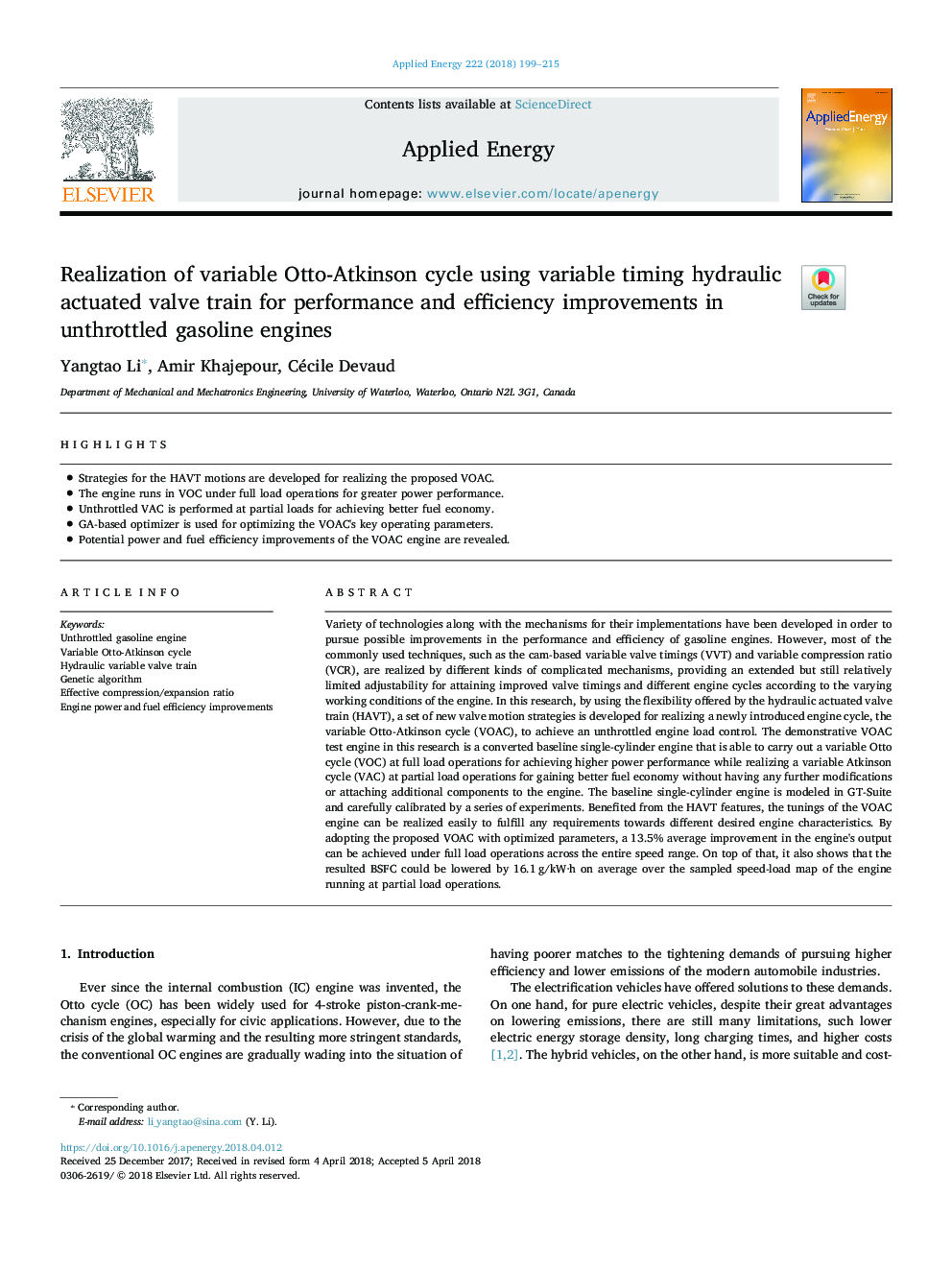| کد مقاله | کد نشریه | سال انتشار | مقاله انگلیسی | نسخه تمام متن |
|---|---|---|---|---|
| 6680085 | 1428068 | 2018 | 17 صفحه PDF | دانلود رایگان |
عنوان انگلیسی مقاله ISI
Realization of variable Otto-Atkinson cycle using variable timing hydraulic actuated valve train for performance and efficiency improvements in unthrottled gasoline engines
ترجمه فارسی عنوان
تحقق چرخه متغیر اتو-اتکینسون با استفاده از متغیر زمان بند هیدرولیک سوپاپ برای بهبود عملکرد و کارایی در موتورهای بنزینی غیرتتتتتتتتتتتتتتتتتتتت
دانلود مقاله + سفارش ترجمه
دانلود مقاله ISI انگلیسی
رایگان برای ایرانیان
کلمات کلیدی
موضوعات مرتبط
مهندسی و علوم پایه
مهندسی انرژی
مهندسی انرژی و فناوری های برق
چکیده انگلیسی
Variety of technologies along with the mechanisms for their implementations have been developed in order to pursue possible improvements in the performance and efficiency of gasoline engines. However, most of the commonly used techniques, such as the cam-based variable valve timings (VVT) and variable compression ratio (VCR), are realized by different kinds of complicated mechanisms, providing an extended but still relatively limited adjustability for attaining improved valve timings and different engine cycles according to the varying working conditions of the engine. In this research, by using the flexibility offered by the hydraulic actuated valve train (HAVT), a set of new valve motion strategies is developed for realizing a newly introduced engine cycle, the variable Otto-Atkinson cycle (VOAC), to achieve an unthrottled engine load control. The demonstrative VOAC test engine in this research is a converted baseline single-cylinder engine that is able to carry out a variable Otto cycle (VOC) at full load operations for achieving higher power performance while realizing a variable Atkinson cycle (VAC) at partial load operations for gaining better fuel economy without having any further modifications or attaching additional components to the engine. The baseline single-cylinder engine is modeled in GT-Suite and carefully calibrated by a series of experiments. Benefited from the HAVT features, the tunings of the VOAC engine can be realized easily to fulfill any requirements towards different desired engine characteristics. By adopting the proposed VOAC with optimized parameters, a 13.5% average improvement in the engine's output can be achieved under full load operations across the entire speed range. On top of that, it also shows that the resulted BSFC could be lowered by 16.1â¯g/kW·h on average over the sampled speed-load map of the engine running at partial load operations.
ناشر
Database: Elsevier - ScienceDirect (ساینس دایرکت)
Journal: Applied Energy - Volume 222, 15 July 2018, Pages 199-215
Journal: Applied Energy - Volume 222, 15 July 2018, Pages 199-215
نویسندگان
Yangtao Li, Amir Khajepour, Cécile Devaud,
